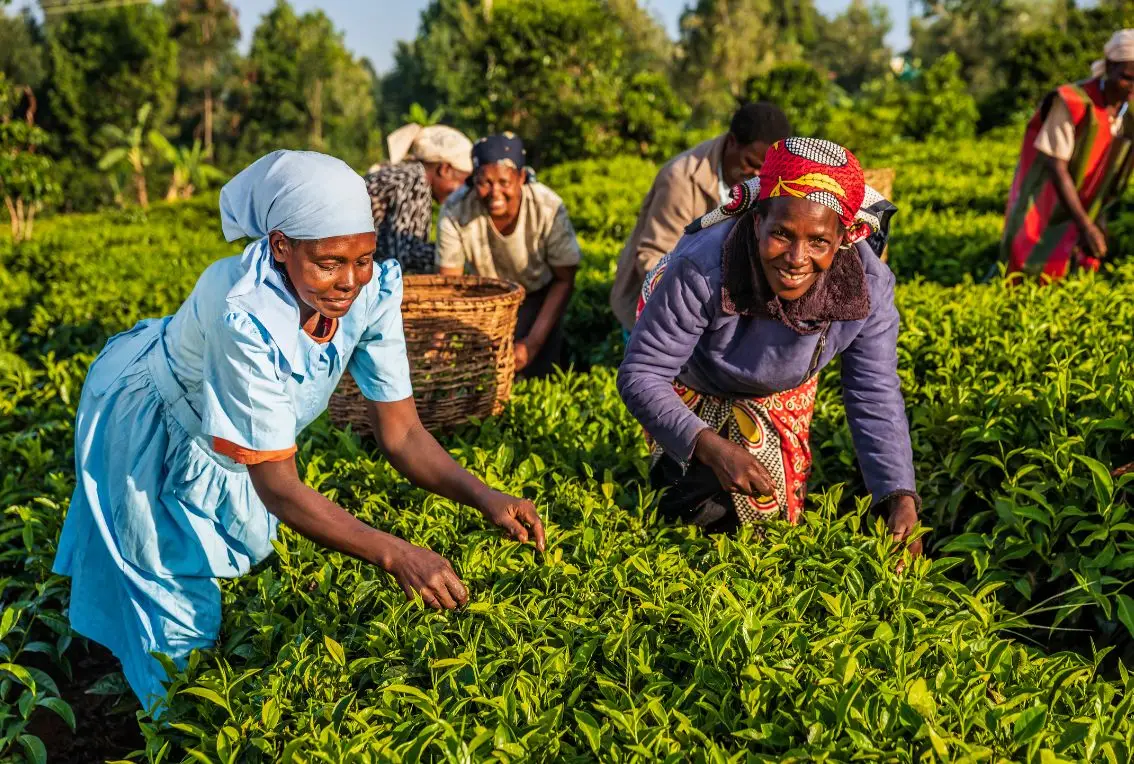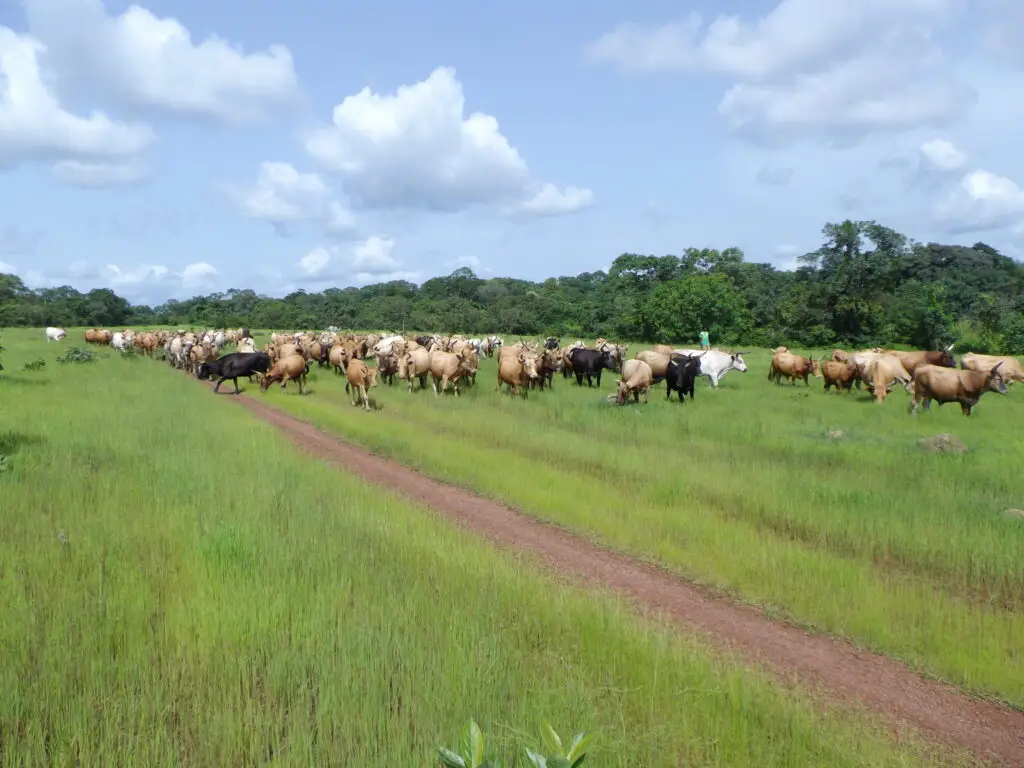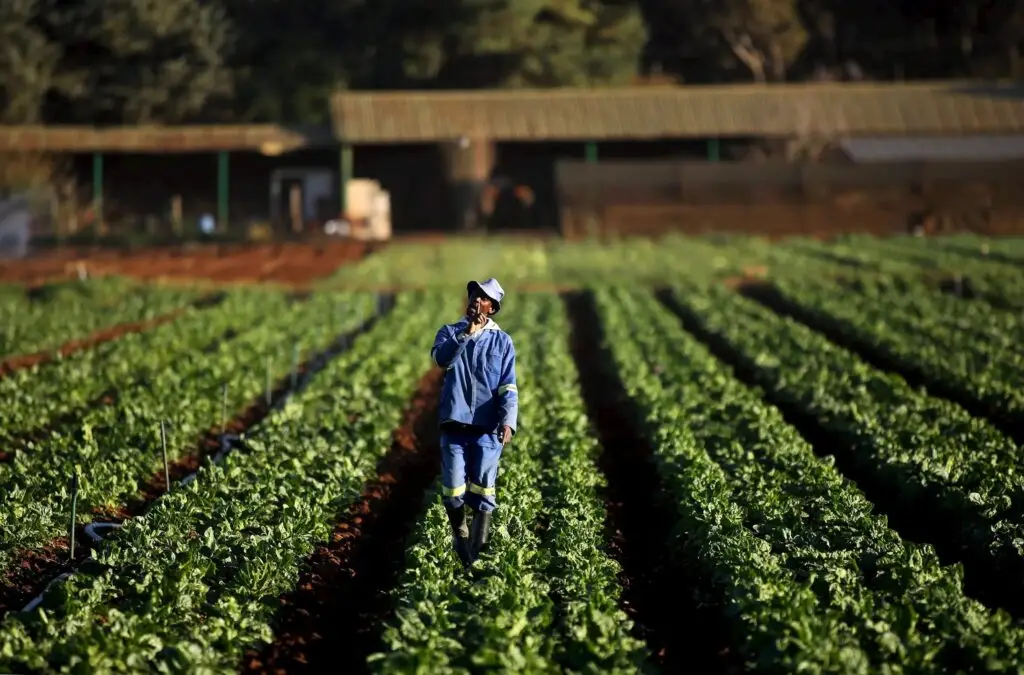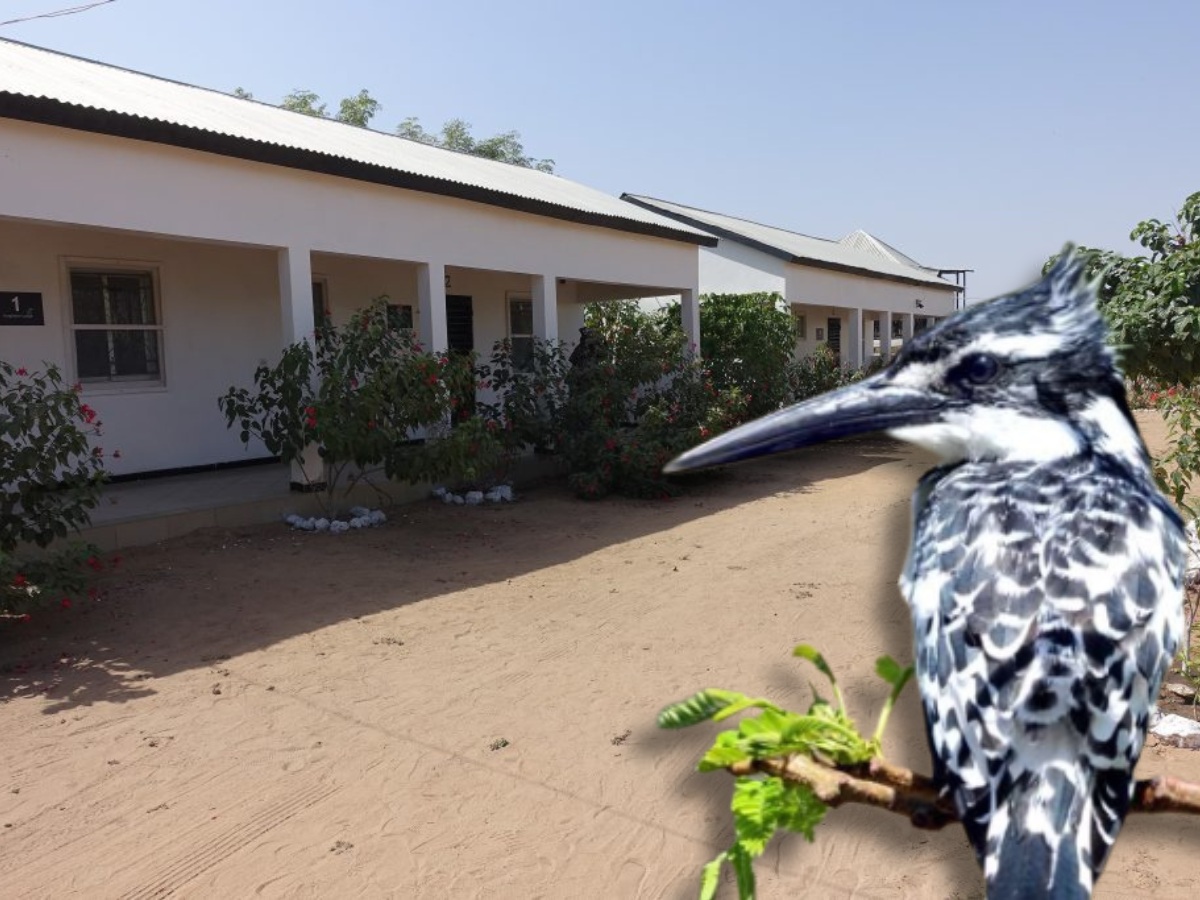
The Gambia, often referred to as the “Smiling Coast of Africa,” is a country where agriculture isn’t just an economic sector – it’s a way of life. For generations, Gambian farmers have tilled the soil, tended to their livestock, and fished the rich waters of the Gambia River and the Atlantic Ocean. Today, as The Gambia seeks to modernize its economy and ensure food security for its growing population, the agricultural sector stands at the cusp of a transformation, offering exciting opportunities for investors looking to cultivate prosperity in this West African nation.
The Current State of Gambian Agriculture
To understand the investment potential in Gambian agriculture, it’s crucial to first examine the current state of the sector. Agriculture remains the backbone of The Gambia’s economy, employing over 70% of the workforce and contributing significantly to the country’s GDP. The sector is primarily characterized by smallholder farming, with the main crops being groundnuts (peanuts), millet, sorghum, and increasingly, cashews and mangoes.
However, despite its importance, Gambian agriculture faces several challenges. These include:
1. Low Productivity: Many farmers still use traditional methods, resulting in yields that are below regional and global averages.
2. Limited Mechanization: The use of modern farming equipment is not widespread, particularly among smallholder farmers.
3. Post-Harvest Losses: Due to inadequate storage and processing facilities, a significant portion of produce is lost after harvest.
4. Climate Vulnerability: As a Sahelian country, The Gambia is vulnerable to climate change, with erratic rainfall patterns affecting crop yields.
5. Limited Access to Finance: Many farmers struggle to access the capital needed to invest in improved inputs and equipment.
These challenges, however, also present opportunities for investors who can bring in capital, technology, and expertise to transform the sector.
Promising Areas for Agricultural Investment
1. Value Addition and Agro-processing
One of the most promising areas for investment is in value addition and agro-processing. Currently, much of The Gambia’s agricultural produce is exported raw, missing out on the opportunity to capture additional value. There’s significant potential to establish processing facilities for various crops:
– Groundnuts: The Gambia is known for its high-quality groundnuts. Investing in modern processing facilities could produce a range of products including peanut butter, oil, and animal feed.
– Cashews: As cashew production increases, there’s an opportunity to set up processing plants to produce cashew kernels for export.
– Mangoes and Other Fruits: With the right cold chain infrastructure, The Gambia could become a significant exporter of fresh and processed fruits. There’s potential for producing dried fruits, juices, and pulps.
– Fish Processing: Given The Gambia’s rich fishing grounds, investments in modern fish processing facilities could tap into the growing global demand for fish products.
2. Horticulture
The Gambia’s climate is ideal for growing a wide variety of fruits and vegetables. With the right investments in irrigation, greenhouse technology, and cold chain infrastructure, The Gambia could become a significant exporter of fresh produce to European markets. Key opportunities include:
– Off-season Vegetables: Producing vegetables like tomatoes, peppers, and leafy greens during the European winter months.
– Tropical Fruits: Expanding production of mangoes, papayas, and other tropical fruits for export.
– Floriculture: The cut flower industry, while currently non-existent in The Gambia, could be developed given the suitable climate and proximity to European markets.
3. Livestock and Poultry
As urban populations grow and diets change, there’s an increasing demand for meat and dairy products in The Gambia and the wider West African region. Opportunities in this sector include:
– Modern Poultry Farms: There’s a growing demand for chicken meat and eggs, which is currently largely met through imports.
– Dairy Production: Investing in dairy farms and processing facilities to meet the growing demand for fresh milk and dairy products.
– Cattle Ranching: Improving local beef production through modern ranching techniques.

4. Aquaculture
With global demand for fish products on the rise and concerns about overfishing in natural water bodies, aquaculture presents a significant opportunity. The Gambia River and its tributaries offer ideal conditions for fish farming. Potential areas for investment include:
– Tilapia Farming: Tilapia is a popular fish in West Africa and has good export potential.
– Shrimp Farming: The Gambia’s coastal areas could be suitable for shrimp aquaculture, tapping into the lucrative global shrimp market.
– Aquafeed Production: As the aquaculture sector grows, there will be increasing demand for high-quality fish feed.
5. Agricultural Technology and Services
There’s significant potential to introduce modern farming techniques and technologies to improve productivity. This could include:
– Precision Agriculture: Using GPS, sensors, and data analytics to optimize farming practices.
– Irrigation Systems: Investing in modern irrigation technology to reduce dependence on rainfall.
– Farm Mechanization Services: Providing tractors and other farm equipment on a rental or service basis to smallholder farmers.
– Soil Testing and Advisory Services: Offering soil analysis and crop advisory services to help farmers optimize their yields.
Government Policies and Incentives
The Gambian government, recognizing the importance of modernizing the agricultural sector, has implemented several policies to attract investment. These include:
1. Tax Holidays: Up to five years of corporate tax exemption for investments in priority sectors, including agriculture.
2. Duty-Free Importation: Agricultural equipment and inputs can be imported duty-free.
3. Land Allocation: The government has set aside land for commercial farming, which can be leased on favourable terms.
4. Export Promotion: Various initiatives to promote Gambian agricultural exports, including participation in international trade fairs.
5. Agricultural Development Bank: Plans are underway to establish a specialized bank to provide financing for agricultural projects.
These policies create a favourable environment for agricultural investments, reducing costs and risks for investors.
Challenges and Considerations
While the opportunities in Gambian agriculture are significant, potential investors should also be aware of the challenges:
1. Land Tenure: The land tenure system in The Gambia can be complex, particularly in rural areas where traditional systems still prevail.
2. Infrastructure: While improving, infrastructure (roads, electricity, etc.) in rural areas may still be limited.
3. Skilled Labor: There may be a need to invest in training to build a skilled workforce for modern agricultural operations.
4. Market Access: While The Gambia has good port facilities, improving linkages to international markets is an ongoing process.
5. Climate Change: As a low-lying coastal country, The Gambia is vulnerable to climate change impacts, necessitating investment in climate-resilient agricultural practices.
However, these challenges also present opportunities for innovative solutions and first-mover advantages for those willing to navigate them.
The Broader Impact of Agricultural Investment
Investing in Gambian agriculture isn’t just about financial returns. It’s about contributing to the country’s food security, rural development, and overall economic growth. Successful agricultural investments can:
1. Create Employment: Modern farms and processing facilities can create significant employment opportunities, both directly and indirectly.
2. Improve Food Security: By increasing local food production, investments can help reduce The Gambia’s dependence on food imports.
3. Boost Exports: Developing export-oriented agriculture can help improve The Gambia’s trade balance.
4. Transfer Technology: Introducing modern agricultural technologies can have spillover effects, improving productivity across the sector.
5. Support Rural Development: Agricultural investments can bring infrastructure improvements and economic opportunities to rural areas, helping to stem rural-urban migration.
Case Studies of Successful Agricultural Investments
While respecting the privacy of individual investors, it’s worth noting some success stories in Gambian agriculture:
1. Cashew Processing: A joint venture between Gambian and Indian investors established a cashew processing plant in 2019, creating over 200 jobs and significantly increasing the value of cashew exports.
2. Mango Exports: A Gambian-Dutch partnership has successfully developed mango orchards and export operations, tapping into the European market for fresh tropical fruits.
3. Poultry Production: A local investor set up a modern poultry farm in 2020, which now supplies a significant portion of the eggs consumed in the greater Banjul area.
These examples demonstrate the potential for successful agricultural investments in The Gambia when local knowledge is combined with international expertise and capital.

Future Trends and Opportunities
Looking ahead, several trends are likely to shape the future of Gambian agriculture:
1. Climate-Smart Agriculture: As climate change impacts become more pronounced, there will be increasing emphasis on agricultural practices that are resilient to climate variability and contribute to mitigation efforts.
2. Organic and Sustainable Production: With the growing global demand for organic products, The Gambia’s largely chemical-free traditional farming practices could be leveraged to tap into this market.
3. Digital Agriculture: The use of mobile technology, drones, and data analytics in agriculture is likely to increase, opening up opportunities for agritech startups.
4. Regional Integration: As regional integration within ECOWAS (Economic Community of West African States) deepens, there will be growing opportunities to tap into the larger West African market.
5. Value Chain Development: There will be an increasing focus on developing entire agricultural value chains, from input supply to production, processing, and marketing.
GambiaInvest Conclusion
The agricultural sector in The Gambia stands at a pivotal point. With its favourable climate, supportive government policies, and strategic location, the country offers a wealth of opportunities for agricultural investment. Whether it’s in modernizing traditional crops like groundnuts, developing new export-oriented horticulture, introducing advanced livestock and aquaculture operations, or pioneering agritech solutions, there’s a wide range of possibilities to suit different investor profiles.
Investing in Gambian agriculture isn’t just about capitalizing on an emerging market opportunity. It’s about being part of a transformation that can have profound impacts on food security, rural livelihoods, and economic development in The Gambia and beyond. It’s a chance to combine profitable ventures with meaningful contributions to sustainable development.
As global concerns about food security grow and the demand for diverse, sustainably produced agricultural products increases, The Gambia’s agricultural sector is poised for growth. Early movers in this space have the opportunity to shape the future of Gambian agriculture, establishing strong market positions and building lasting partnerships.
The path to agricultural transformation in The Gambia may have its challenges, but for investors with vision, patience, and a commitment to sustainable development, the potential rewards – both financial and social – are substantial. As The Gambia continues to write its story of growth and development, agriculture will undoubtedly play a central role. The question is: will you be part of writing that story?
In the end, investing in Gambian agriculture is more than just cultivating crops – it’s about cultivating prosperity for a nation and its people. It’s an opportunity to be at the forefront of Africa’s agricultural renaissance, contributing to food security, economic growth, and sustainable development in one of West Africa’s most promising nations.










